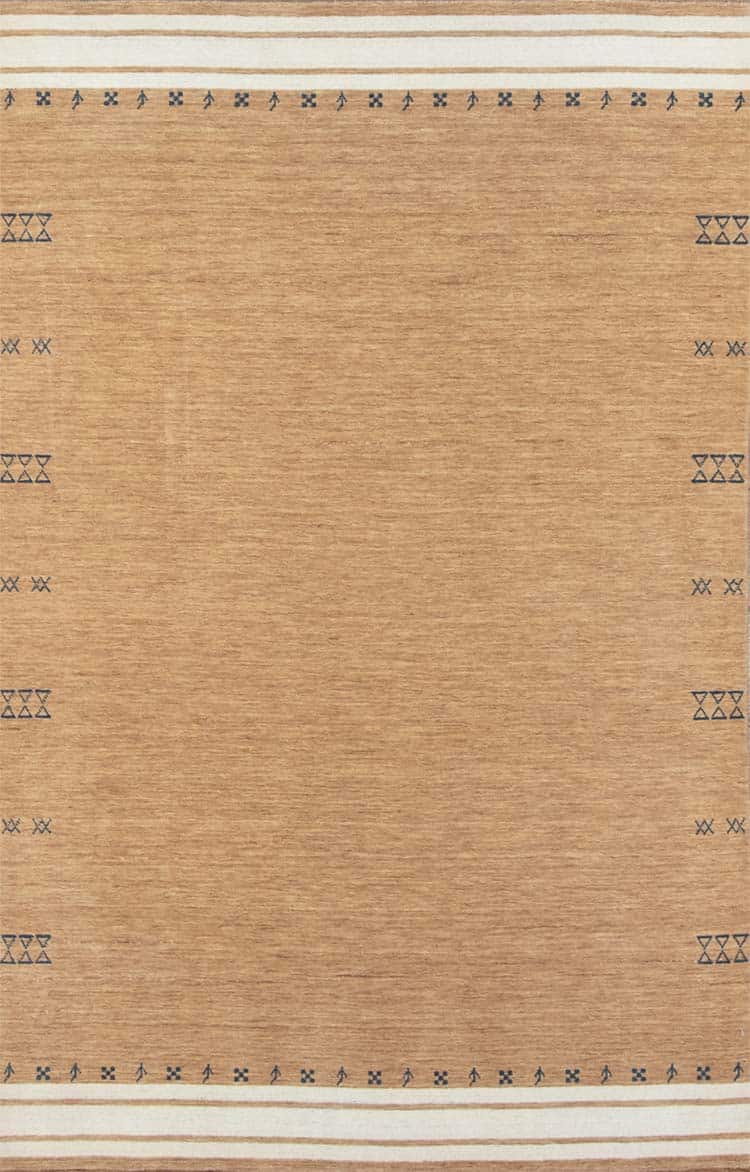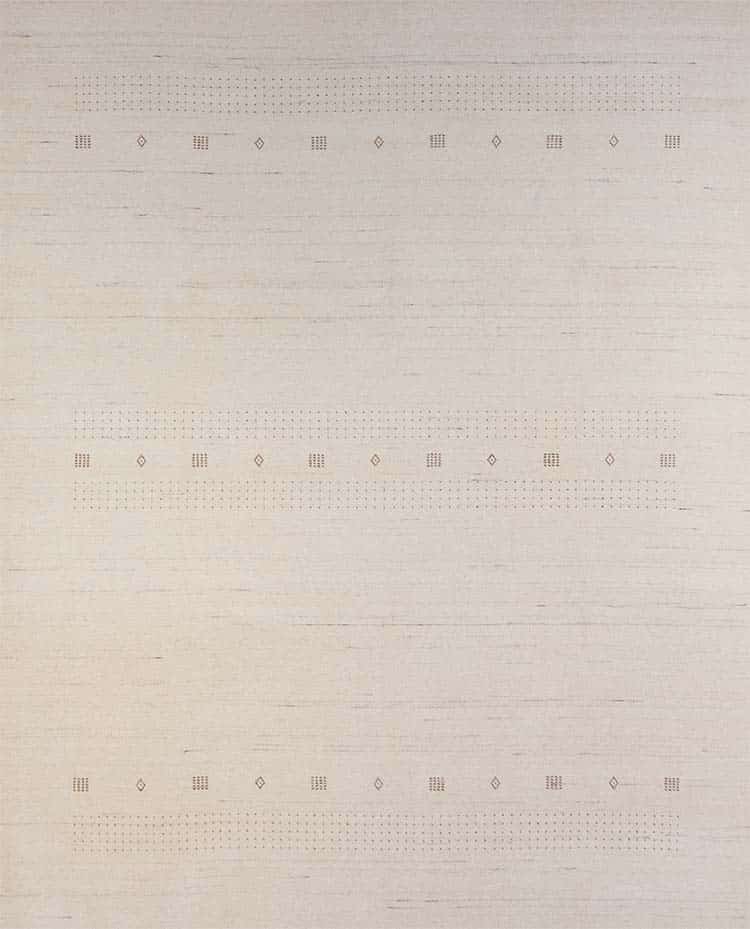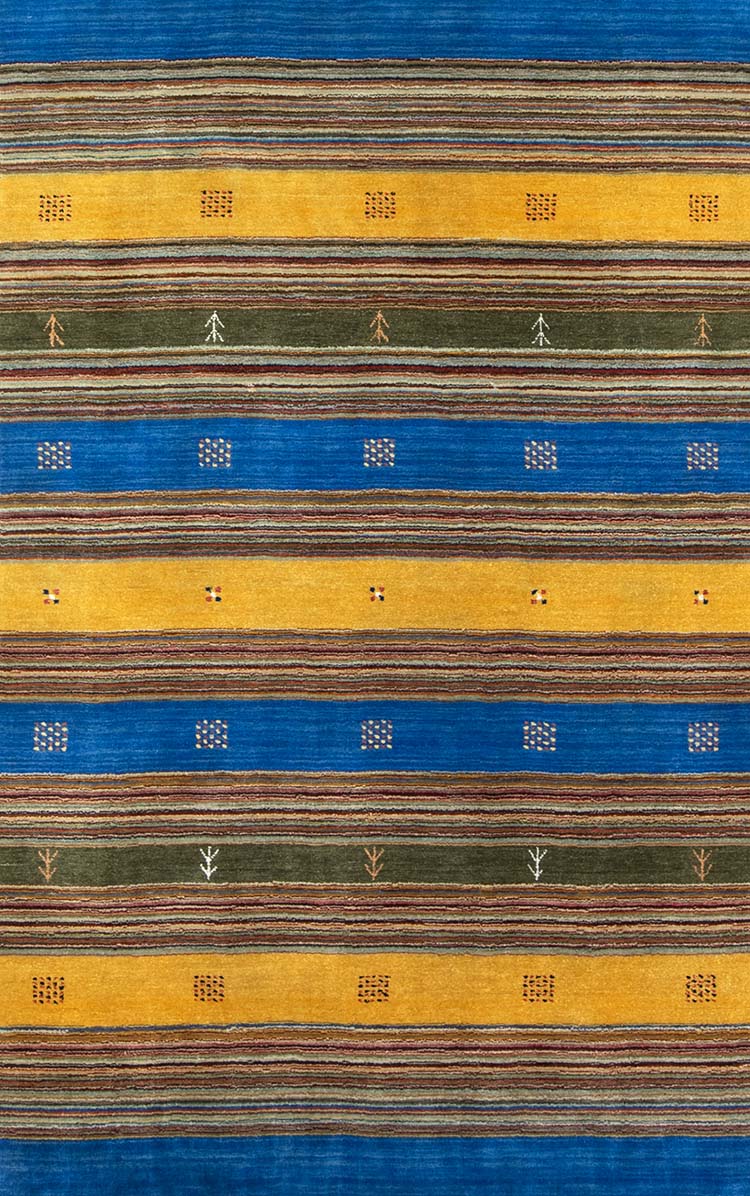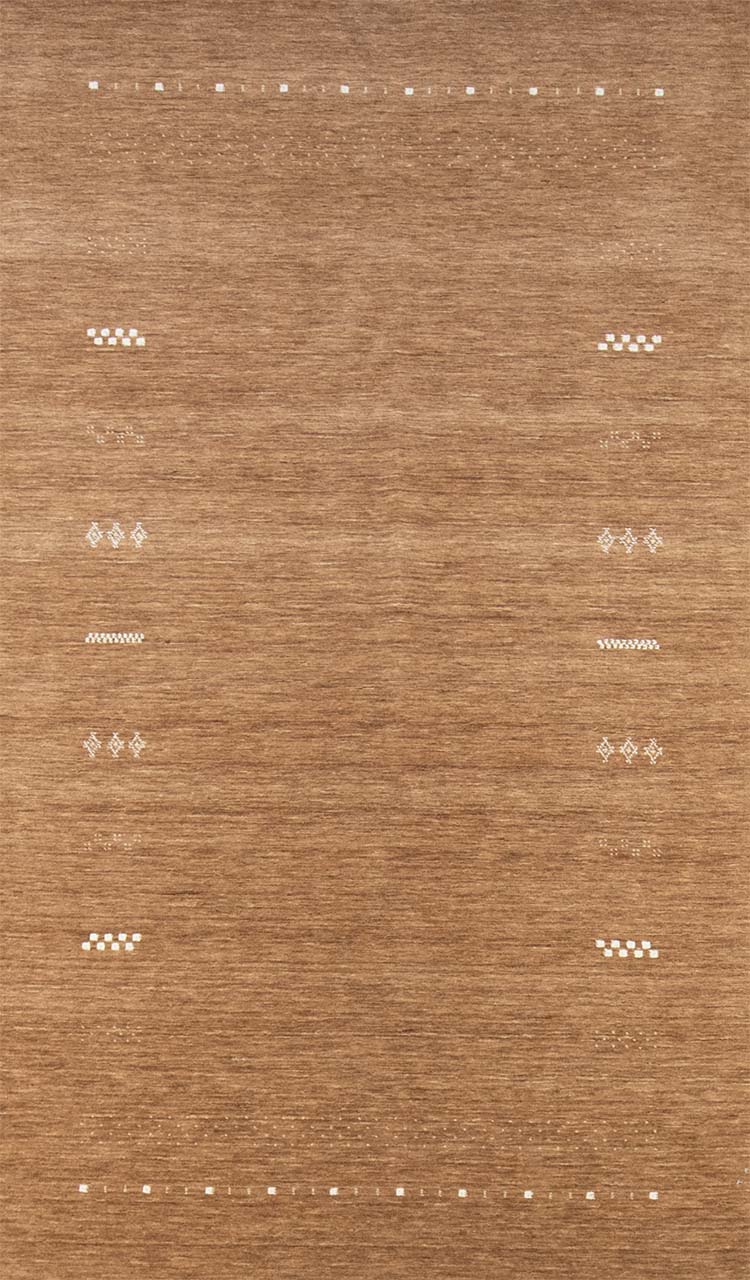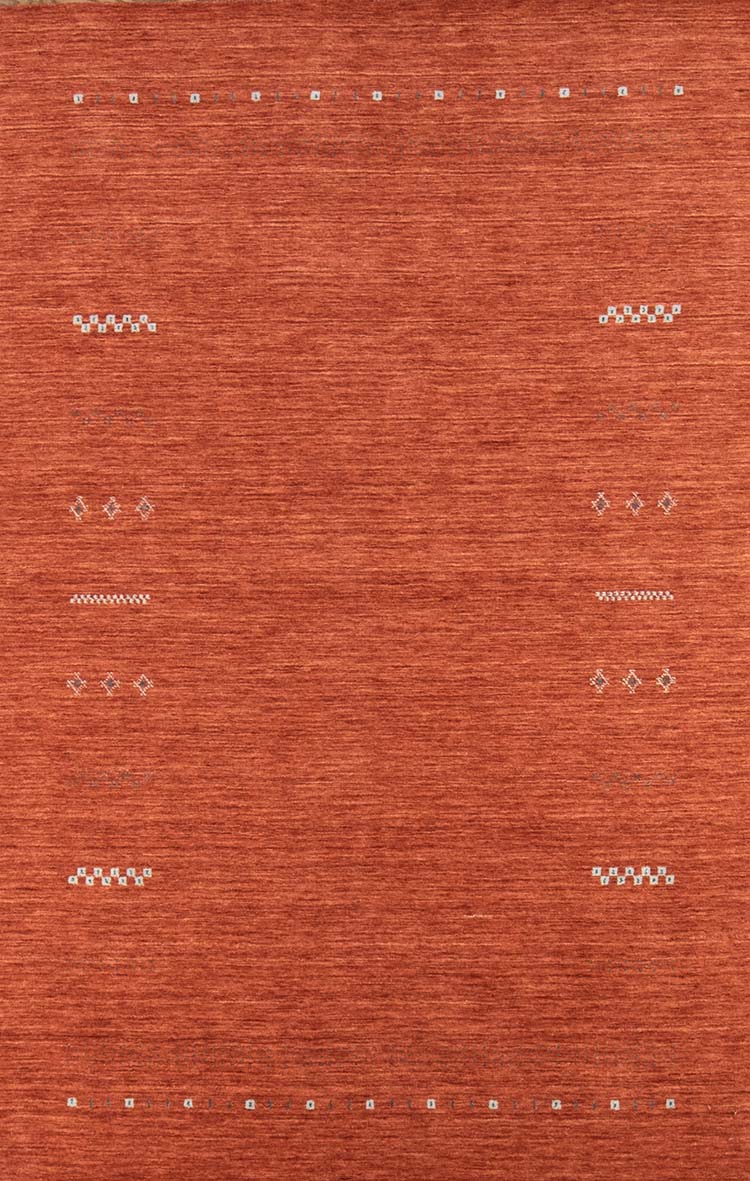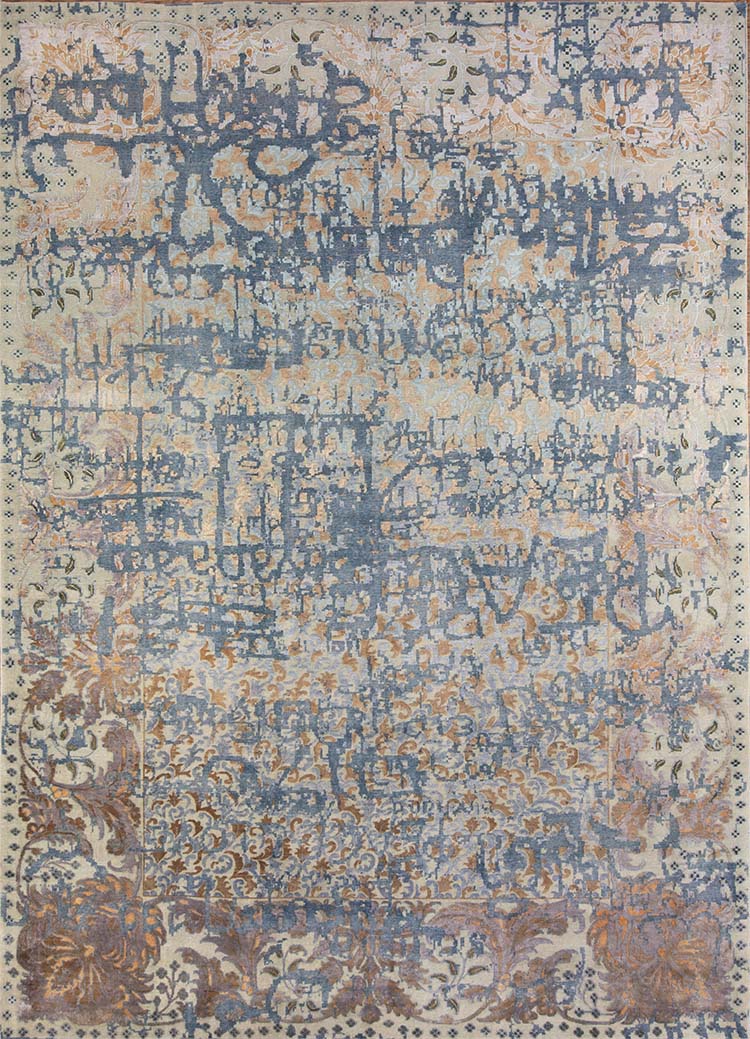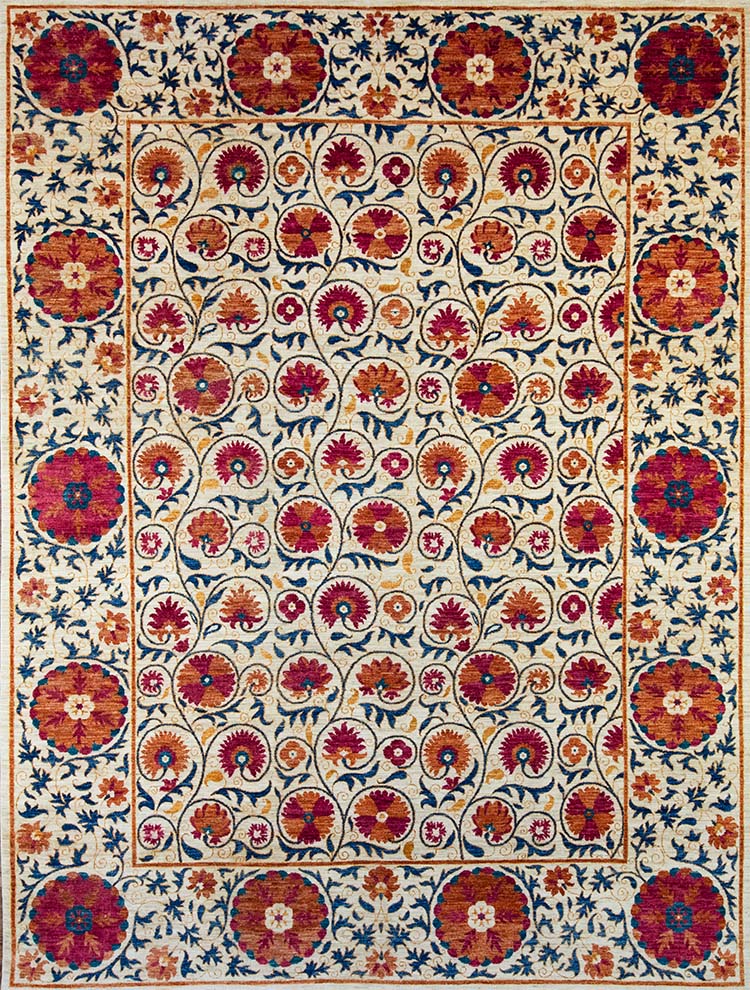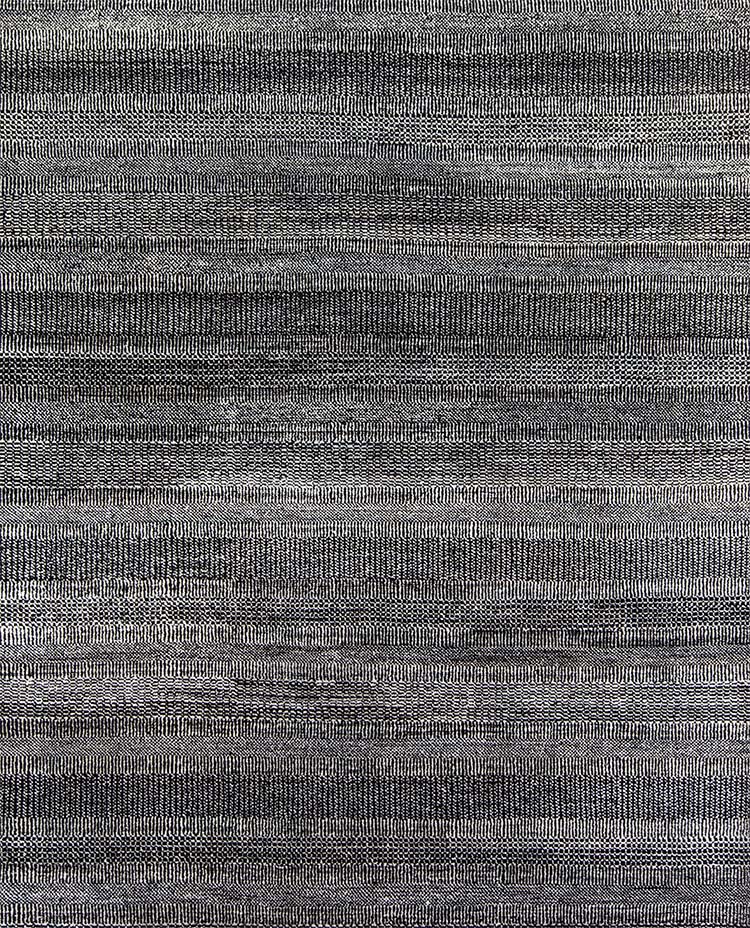Contemporary Rugs
Contemporary rugs are known for their simplicity and soothing patterns. Beginning in the early twentieth century, consumer demands of the European market for Persian rugs resulted in simplifying their traditional, busy, dense, and very intricate patterns. Ziegler and Company, an Anglo-German producer and distributor of Persian rugs in the late nineteenth and early twentieth centuries, based in Manchester, established rug workshops in Tabriz and Arak, Iran.
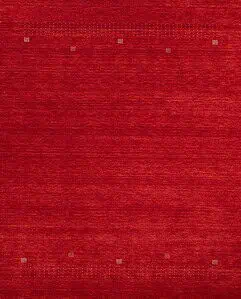
This trend intensified in the second half of the twentieth century and resulted in contemporary handmade Persian rugs with even simpler patterns and fewer coolers, often soothing and muted. Such rugs have proven popular, leading to a significant increase in contemporary rug production, offering a wide range of subtle colors and designs. After a while, however, the market for such contemporary rugs, which lacked more complex color selections and patterns, slowed; therefore, transitional rugs began to be produced. Transitional rugs are described as falling between traditional and contemporary designs: they often have fewer than 10 colors and are less dense and busy than traditional rugs. The major contemporary rug-weaving regions are in India, Pakistan, Tibet, Nepal, Turkey, and Iran, and most transitional rugs are made in Pakistan, India, and Iran.
Some contemporary rugs are made of a combination of wool and synthetic fibers, while others are entirely synthetic. Transitional rugs are made of wool and silk, all wool, or a combination of wool and inlaid artificial silk. Persian Gabbeh contemporary rugs are handwoven in Iran with high-quality wool and vegetable dyes; India also produces some high-quality, contemporary, and transitional vegetable-dyed Gabbeh rug designs.
Beautiful Rugs offers a selection of contemporary and transitional rugs. An example of the contemporary rug is a handmade Persian Gabbeh wool rug (catalog number 5050), which has a uniform medium brown field whose design features eighteen small rectangles, created with a crenelated yellow outline, and all these small rectangles (seven set up along the vertical edge and four on the horizontal ends of the rug) form another large rectangle within the rug field, dividing the rug into an area with a main border space. Each small rectangle has a yellow and/or dark brown outlined image of a traditional rug motif: a stylized tree of life, a stylized tulip flower, a simple pattern of eight rosettes, and a simple pattern of five or six diamonds. The traditional Persian handmade design pattern in this rug has been radically simplified and minimized into very basic line-like drawings.
Another example of a contemporary area rug (catalog number 7303) features an allover diamond lattice network with five rows of two sizes of large stylized Shah Abbasi lotuses, limited to two colors: bright yellow and light brown, on a medium brown field. Two different types of lotus patterns and sizes alternate in the lattice diamond rows. A very narrow border frames the entire rug. The traditional handmade Persian element in this rug (stylized lotuses), rather than appearing in striking bright colors on a darker field to catch the viewer’s attention, has been significantly subdued in its color intensity and contrast to the rug’s field.
STYLES
Showing 1–16 of 89 resultsSorted by latest
-
Red And Yellow Rug, Handmade Designer Rug
$5,337Original price was: $5,337.$4,269Current price is: $4,269.Add to WishlistAdd to Wishlist -
Gray Area Rug, Contemporary Area Rug
$2,970Original price was: $2,970.$2,227Current price is: $2,227.Add to WishlistAdd to Wishlist -
5×8 Area Rug, Small Beige Area Rug 5×8
$1,039Original price was: $1,039.$935Current price is: $935.Add to WishlistAdd to Wishlist -
6 By 9 Rugs, Floral Contemporary 6×9 Rug
$1,895Original price was: $1,895.$1,610Current price is: $1,610.Add to WishlistAdd to Wishlist -
Gray And White Rug, Contemporary Gray Rug 8×10
$2,680Original price was: $2,680.$1,999Current price is: $1,999.Add to WishlistAdd to Wishlist -
Cream Rug, Contemporary Cream Colored Rug
$2,680Original price was: $2,680.$1,999Current price is: $1,999.Add to WishlistAdd to Wishlist -
Contemporary Area Rug, Grey Rug 8×10
$1,860Original price was: $1,860.$1,581Current price is: $1,581.Add to WishlistAdd to Wishlist -
Green Rug, Contemporary Soft Wool Green Rug
$690Original price was: $690.$599Current price is: $599.Add to WishlistAdd to Wishlist -
Add to WishlistAdd to Wishlist
-
Black And White Rugs, Contemporary 9×12 Rug
$2,180Original price was: $2,180.$1,853Current price is: $1,853.Add to WishlistAdd to Wishlist -
Add to WishlistAdd to Wishlist
-
Modern Rust Area Rug, Area Rug for Bedroom
$1,144Original price was: $1,144.$915Current price is: $915.Add to WishlistAdd to Wishlist -
Olive Green Rug, Handmade Modern Wool Rug
$2,950Original price was: $2,950.$2,655Current price is: $2,655.Add to WishlistAdd to Wishlist -
Vintage Modern Rug, Designer Modern Rugs 9×12
$6,394Original price was: $6,394.$4,156Current price is: $4,156.Add to WishlistAdd to Wishlist -
Modern Magenta Rug, Oriental Modern Rug 9×12
$7,735Original price was: $7,735.$4,999Current price is: $4,999.Add to WishlistAdd to Wishlist -
Black and White Area Rugs, Modern Area Rugs
$1,698Original price was: $1,698.$1,499Current price is: $1,499.Add to WishlistAdd to Wishlist


